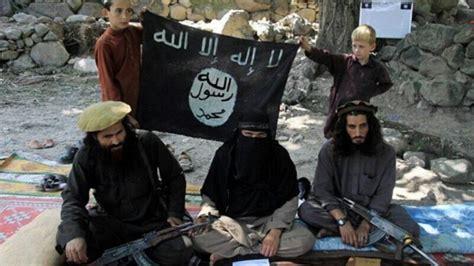
Ex-intelligence chief: Daesh split into three factions in Afghanistan
Amid growing concerns about the threat posed by Daesh’s Khorasan branch, or ISIS-K, Rahmatullah Nabil, the former intelligence chief of Afghanistan, said that the group has fragmented into three distinct factions within the country, each harboring different perspectives and objectives.
In a conversation with Amu, Nabil characterized ISIS-K as the foremost challenge to regional stability, noting the group’s adoption of advanced technology and innovative financing strategies.
The Complex Landscape of Daesh in Afghanistan
Since assuming control of Afghanistan in August 2021, Daesh has escalated its campaign of violence, predominantly targeting Shiites and Taliban officials, including the governor of Balkh and key commanders. The group recently orchestrated a significant attack in Kandahar, a stronghold of Taliban leader Hebatullah Akhundzadeh.
Nabil elaborated on the multifaceted presence of Daesh in Afghanistan, outlining three primary factions:
The Pakistan-Backed Faction:
This group is largely a creation of Pakistani military and intelligence efforts, exerting influence primarily in Afghanistan’s eastern provinces such as Nuristan and Kunar. It serves as a dual tool: applying pressure on the Taliban within Afghanistan and pursuing cross-border objectives, including in Indian-administered Kashmir, sometimes coordinating with Al-Qaeda in the Indian Subcontinent.
The Taliban-Affiliated Faction:
Nabil identified a second faction consisting of Taliban groups that pursue both domestic and international agendas under the guise of ISIS. He suggested that some attacks attributed to ISIS are, in fact, orchestrated by these Taliban factions as a strategic maneuver to project ISIS-K as a potent alternative threat to regional countries, should efforts be made to undermine the Taliban’s governance.
The Core ISIS-K Faction:
According to Nabil, the primary and most formidable ISIS-K faction poses a significant challenge to the region, having been bolstered by the political upheaval and the release of militants since 2021. This group’s access to cutting-edge technology and novel financial mechanisms, including cryptocurrencies and drug trafficking revenues, amplifies its threat.
Regional Threats and Strategy
The Daesh Khorasan branch has been implicated in two major regional attacks in recent months, causing significant casualties in Kerman, Iran, and Moscow, Russia. These incidents have highlighted the involvement of Central Asian fighters, suggesting broad recruitment efforts within the region since 2015.
Frank McKenzie, former commander of the United States Army Central Command, emphasized the global ambitions of ISIS, asserting that the presence of a residual U.S. and NATO force could have mitigated the threat in Afghanistan.
Nabil points to the sophisticated, decentralized planning of attacks like those in Kerman and Moscow as indicative of a more evolved strategy than that of Al-Qaeda, allowing for more elusive and complex operations.
Daesh’s Khorasan Branch: Perspective and Impact
U.S. intelligence and United Nations reports have underscored the persistent threat posed by ISIS-K, noting its focus on undermining the Taliban’s legitimacy and targeting international interests, including the United Nations.
Concerns about ISIS-K’s activities and the potential misuse of Afghanistan as a haven for terrorism persist among regional countries, notably Russia and Central Asian nations. Despite the Taliban’s assurances against allowing Afghan territory to be used for terrorist activities, the challenge of completely eradicating ISIS-K remains daunting.
Estimating the Number of ISIS-K Fighters
Estimates on the number of ISIS-K fighters within Afghanistan vary. The Russian-led Collective Security Treaty Organization cited a figure of 6,500, with a significant contingent near the Tajikistan border. A U.S. report provided a lower range, between one and three thousand. Nabil posits that these numbers may have increased due to the Taliban’s accommodation and a surge in extremist motivations, underscoring the complex and evolving threat of terrorism in the region.
Source » amu.tv





